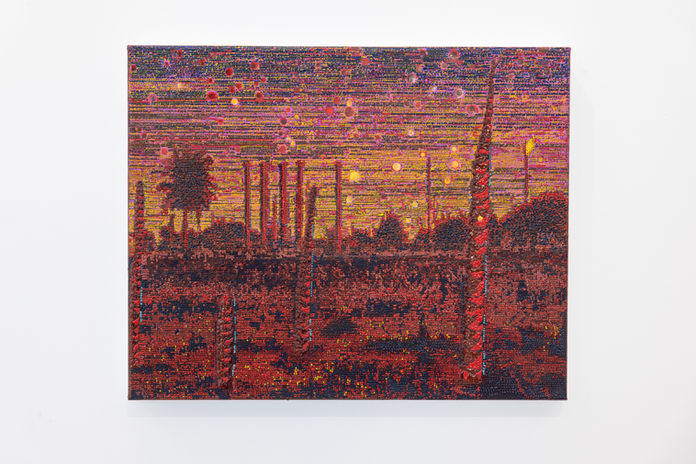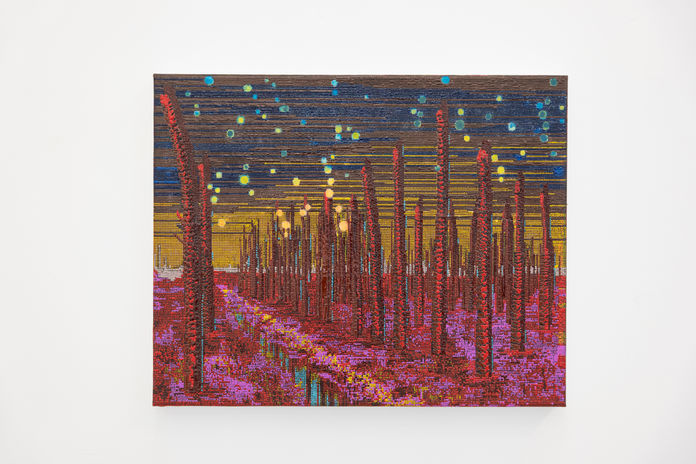SAMIRA HODAEI
Headless Palms
3 April until 10 May 2025
The date palm is one of the most ancient and sacred trees that is revered as the "queen of trees" by historians. For the people of southern Iran, it is more than just a plant; it is a cherished legacy, a steadfast companion, and a symbol of resilience. In some regions, the date palm is central to traditions, customs, and daily life. Every part of the tree is utilised, and the date palm has become so integral to the lives of those in the region that it is no exaggeration to say that each tree is akin to a breadwinner, contributing significantly to a family’s livelihood. In fact, it is often regarded as a member of the family, measured in terms of "a person", and even attributed to the concepts of life and death. This deep connection underscores its profound cultural, economic, and spiritual significance.
This relationship between the date palm and the people of southern Iran forms the foundation of Samira Hodaei’s latest series, "The Headless Palms of Arvand Kenar". Arvand Kenar, a region in Abadan, lies in the southernmost part of Iran’s Khuzestan Province. Its strategic location near the country’s first oil refinery, the Arvand River, and the Iraqi city of Faw made it a focal point during the Iran- Iraq War. The conflict left indelible scars on the land and its people, transforming once-thriving palm groves into battlegrounds. The shores bore the brunt of enemy fire, and the palms, which once provided cover and sustenance, became casualties of war. Compounded by drought, pollution, and rising water salinity, the war decimated more than half of the region’s six million palm trees.
These headless palms, stripped of their life-giving crowns, have become powerful metaphors in Hodaei’s work—symbols of collective trauma, both environmental and human. The physiology of a palm tree mirrors that of the human body: if its head is severed, it withers and dies. For Hodaei, the palm tree is not merely a plant; it is a cultural symbol, a living entity whose existence parallels our own. Just as a palm tree dies without its crown, so too do communities falter under the weight of conflict, neglect, and ecological collapse.
Having grown up in Khuzestan during the war, Hodaei witnessed the transformation of once-vibrant landscapes, lush with palm groves, into barren expanses of skeletal forms. The haunting beauty of these scarred terrains inspired her to reimagine the trees as silent witnesses to the ravages of war and environmental decay. In her work, she envisions their forms as vessels of flesh and skin, embodying the pain and endurance of a land and its people. Through this lens, she explores the interconnected trauma of nature and humanity, weaving together their shared histories of loss and survival.
Hodaei’s art also interrogates the modern world’s relationship with nature and identity. In an era dominated by social media filters and AI algorithms, she challenges viewers to reconsider what it means to be seen and remembered. The decapitated palms serve as enduring symbols of cultural memory, resisting the ephemeral and superficial nature of digital impressions. Her works are not mere depictions of a landscape; they are meditations on loss, resilience, and the fragile ties that bind human and natural histories. Through this collection, Hodaei seeks to honour the enduring spirit of a land and its people, while urging reflection on the consequences of human actions on the world around us.
The exhibition opens 3rd April from 17:00 - 20:00 in presence of the artist.









